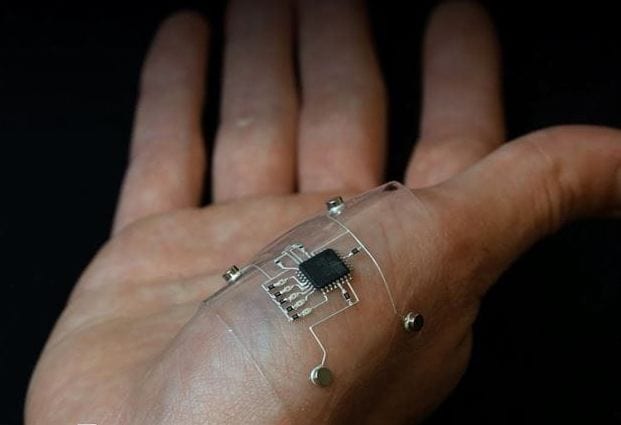WRIGHT-PATTERSON AIR FORCE BASE, Ohio – It is often said that ‘two heads are better than one;’ for the Air Force, leveraging the expertise and insights of academia has led to advances in materials development and processing destined to be a game changer for the future fight.
A collaboration between scientists at the Air Force Research Laboratory and the Wyss Institute for Biologically Inspired Engineering at Harvard University has resulted in a new method for digital design and printing of stretchable, flexible electronics. The process, called Hybrid 3-D printing, uses additive manufacturing to integrate soft, conductive inks with a material substrate to create stretchable, wearable electronic devices.
“This is the first time a 3-D printer has been shown, in a single process, to print stretchable sensors with integrated microelectronic components,” said Dr. Dan Berrigan, a research scientist at the AFRL Materials and Manufacturing Directorate. “Starting from nothing, the printer builds an entire stretchable circuit that blends the mechanical durability of printed components with the robust performance of off-the-shelf electronics.”
Case Study: How PepsiCo achieved 96% cost savings on tooling with 3D Printing Technology
Above: PepsiCo food, snack, and beverage product line-up/Source: PepsiCo PepsiCo turned to tooling with 3D printing...






























0 Comments